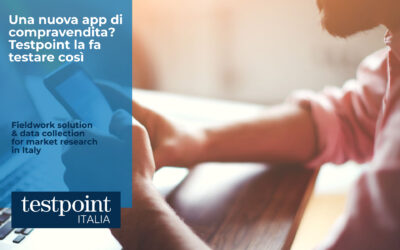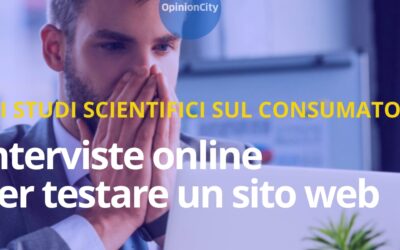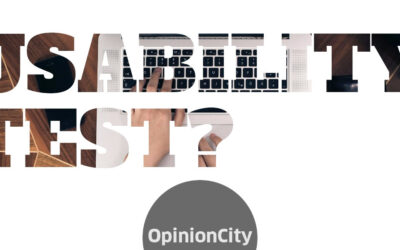Do you need to setup a usability test?
Choose Testpoint
Discover the services of a modern agency dedicated to today’s market researchers.
Get a free quote
What is a Usability test: a case study
The “Usability Testing” methodology applies to different types of products – from Web and mobile products (i.e. websites and Apps) to IoT devices, smartwatches and any other type of technological device – and it answers the question: “My current and future users are able to use my product? “. The question may seem simple but the answer is extremely complex. Especially in the mobile world where every step must be studied to perfection.
The Usability test is a very effective research methodology to investigate the user experience – that is, the set of emotions, perceptions and reactions that a person experiences when interfacing with a product or service – and it offers, among others, the following advantages:
-
It involves real persons: it allows to observe real people while they are using the product
-
It offers immediate feedback: participants’ feedback is clear and fast and immediately gives a positive feedback on usability or offers an effective tool to understand problems
-
Eliminate redundancies: clear feedback from real people – outside the organization that develops the product – can solve many dilemmas and controversies and speeds the decision-making processes, otherwise very slow
In short, this type of test helps development teams to understand the details, motivations and behavior of end users.
Our experience in the field
Una nuova app di compravendita? Testpoint la fa testare così
Ormai le piattaforme per la compravendita online sono sempre più numerose e sono tantissimi gli utenti che se ne servono. Per questo è importante che siano chiare, di immediata comprensione e semplici da utilizzare per tutti. Immaginavate che questi servizi innovativi...
Remote IDIs to test a website
Recently, Testpoint carried out a series of remote interviews in order to test a website. It was an e-commerce website for a large-scale retail chain and the goal was to verify how clear the website was, how intuitive to surf...
What is a Usability test? Testpoint recruits travel agents to test a website
Sure! Even websites should be tested to find out if they are clear, effective and easy to use. A website specifically designed for tourist reservations has been tested by travel agents selected by Testpoint.
How to set up a Usability Test
If you want to know if your product is easy enough to use, look at the people who use it and see where they are in trouble. To do this, the ideal number of people is maximum 3 or 4 and the facilitator – the person conducting the test – plays an essential role.
In fact, it is necessary that the facilitator is well informed about how the product works, as they have to ask specific questions and requests to the participants. They must also be able to not get involved in the comments of the participants and maintain a neutral attitude throughout the test. However, they have also to understand the thoughts of the participants and try to clarify them if they are confused, paying attention not to misrepresent and thus distort the result of the test.
The person conducting the test has the task and the pleasure of observing the participants and asking for their impressions – if the participants do not do so spontaneously – to understand what they think and where they encounter difficulties.
As for the participants, the ideal is to have real users or at least people who represent the target audience.
Participants are asked to use the device and to think aloud in order to enable to understand if the functions are comprehensible and clear and if what has been thought is transmitted.
Usability test and modern technologies
The spaces dedicated to Usability tests are called Usability Labs and it consists of a room where the test takes place and a viewing room where, through a one-way mirror, observers can assist.
So far nothing different from normal qualitative research. The difference – as we said at the beginning – lies in the use of technology: while, in fact, focus group and in-depth interviews are audio and video recorded using traditional technology, in the case of Usability tests a specific technology called Picture-in-Picture is required: it allows to simultaneously record and show both the respondent’s face and the device you are testing or, in the case of websites or apps, the PC or phone screen. In this way, it is possible for observers and analysts to follow and analyze all the steps that respondents carry out by testing the device without losing the facial expression.
Differences between Usability test and focus group
In short, focus group are used to determine the needs of users and to test the idea behind the product and they are useful in the design and development phase. But to understand if the product works and how to improve it, it is necessary to conduct a usability test as it allows to identify problems and understand which ones are really important, and above all to find a solution.



